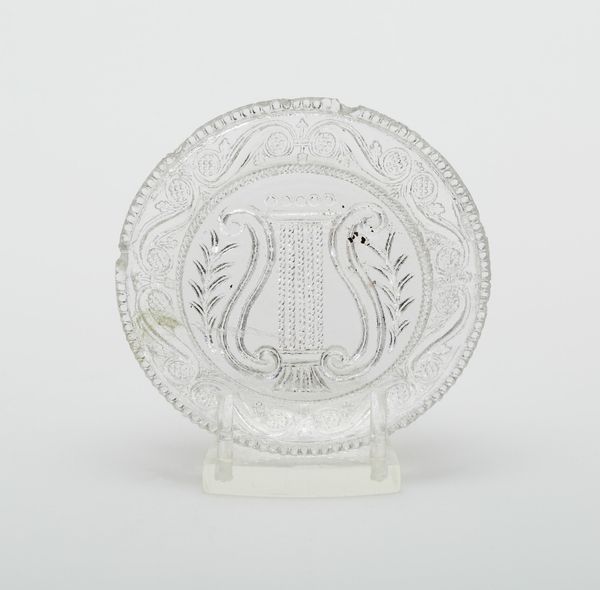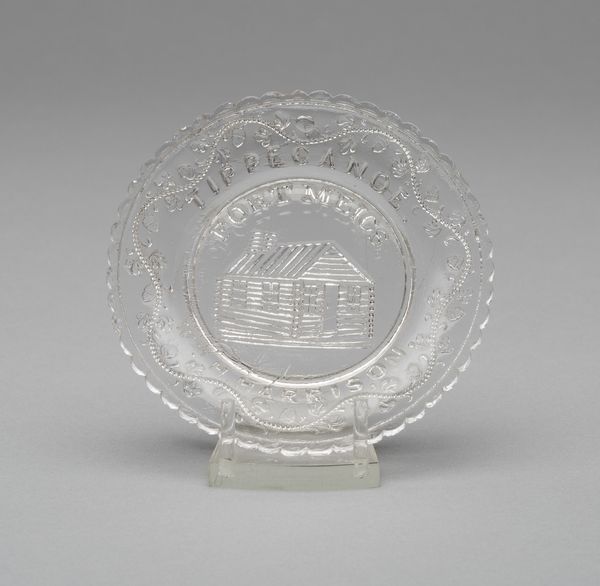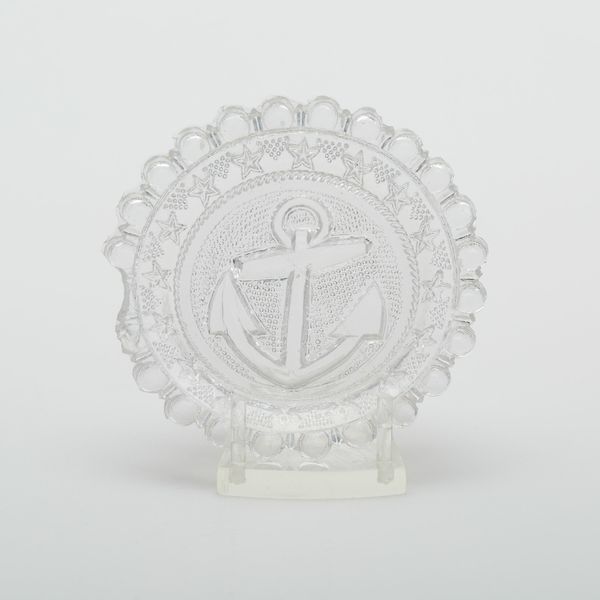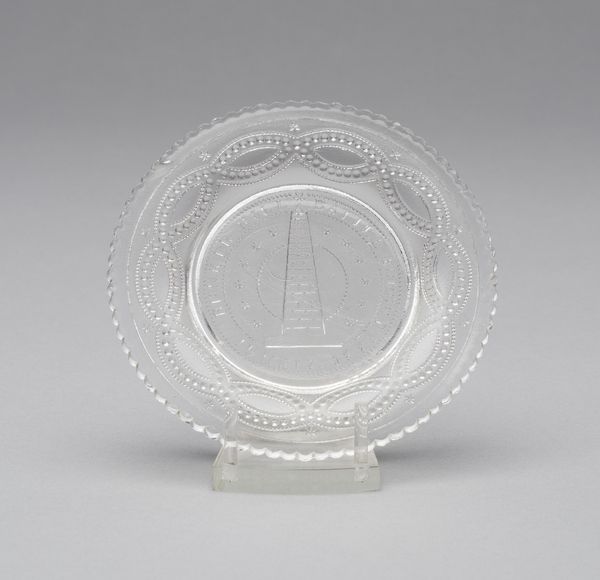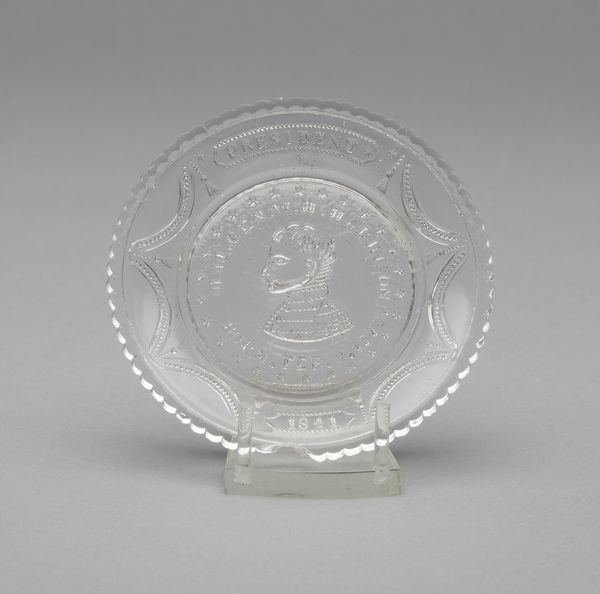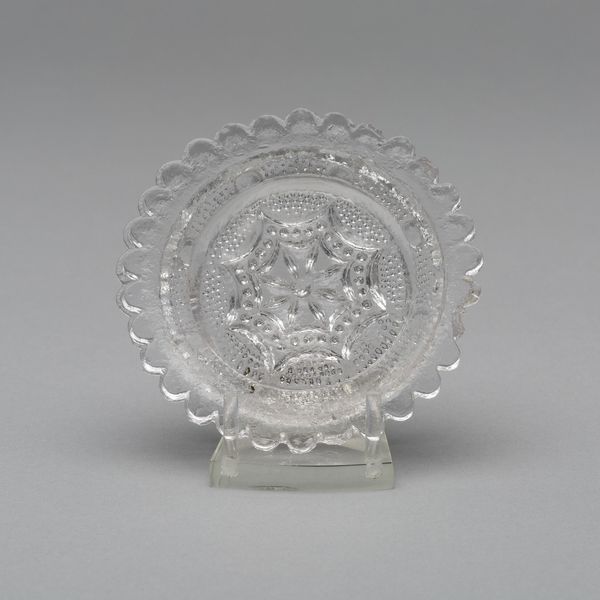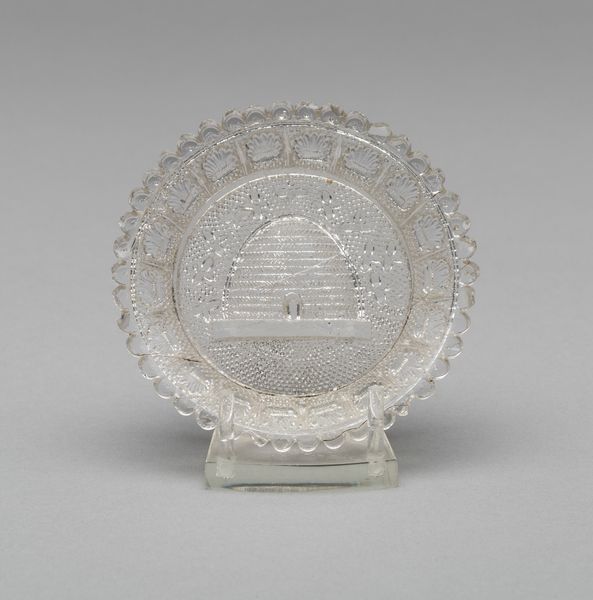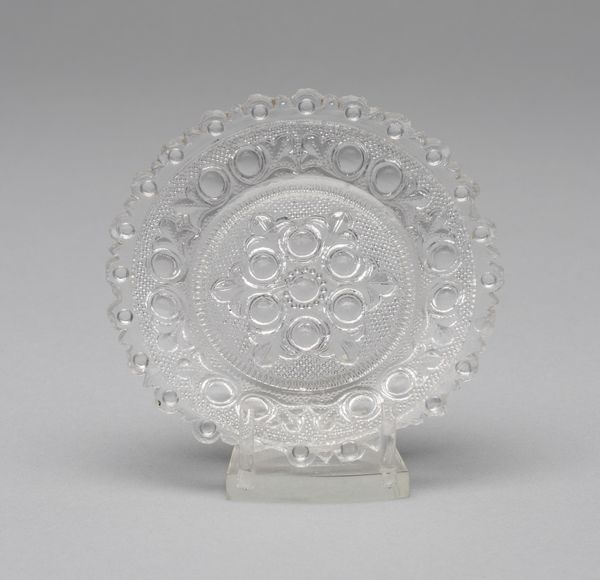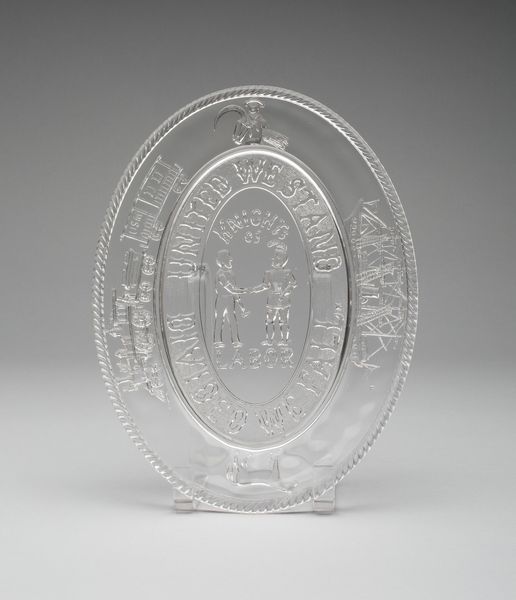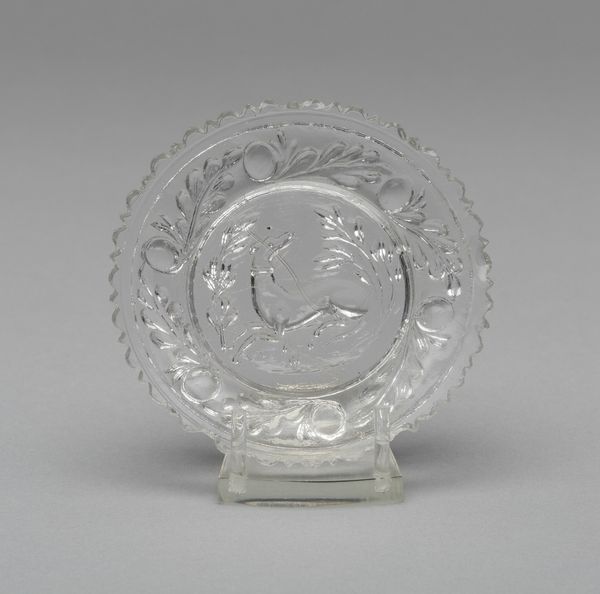
print, ceramic, glass, engraving
# print
#
ceramic
#
glass
#
stoneware
#
ceramic
#
history-painting
#
decorative-art
#
engraving
Dimensions: diam. 8.9 cm (3 1/2 in.)
Copyright: Public Domain
Curator: Let's examine this intriguing cup plate, created anonymously between 1835 and 1838. It's part of the decorative arts collection here at the Art Institute of Chicago, primarily made from pressed glass using engraving techniques. Editor: It has such a delicate, almost ghostly quality. The transparent material coupled with the shallow engraving evokes a fleeting image. One barely notices the scene immediately; the translucence almost hides its representation within the pattern of the glass itself. Curator: Indeed. The very material underscores its social context. Cup plates became fashionable accessories during the mid-19th century to prevent tablecloth staining when pouring hot tea or coffee into saucers for cooling. The depicted steamboat suggests America’s burgeoning industrial spirit and river trade at the time. Editor: Yes, that steamboat image is very dominant, literally centralized. Notice the scalloped edge that gives this piece a rhythm. This piece contains an unusual layering; there are subtle ornamental patterns at the edge which draw our focus inward to that central, boldly-pictured steamship floating on seemingly endless waves. How very curious! Curator: The steamboat motif held symbolic weight as well. Steamboats dramatically reshaped American commerce and transportation networks. A small, quotidian object thus embodies broader transformations in technology and lifestyle of its period. Also, we mustn't neglect how easily mass produced this was, reflective of the burgeoning culture of its time. Editor: Do you find any political context to this small decorative item, perhaps the river connecting states, or...? Curator: Perhaps, but that remains speculation, lacking any documentation from that time. We can analyze design and functionality with greater confidence than intent! Regardless, considering our object from those earlier days reveals more about life, design, mass-production and representation than may immediately be evident. Editor: A remarkable distillation, reminding us that visual experience—particularly within historical artwork—becomes meaningful by exploring a full breadth of experience that extends far beyond superficial impression!
Comments
No comments
Be the first to comment and join the conversation on the ultimate creative platform.

